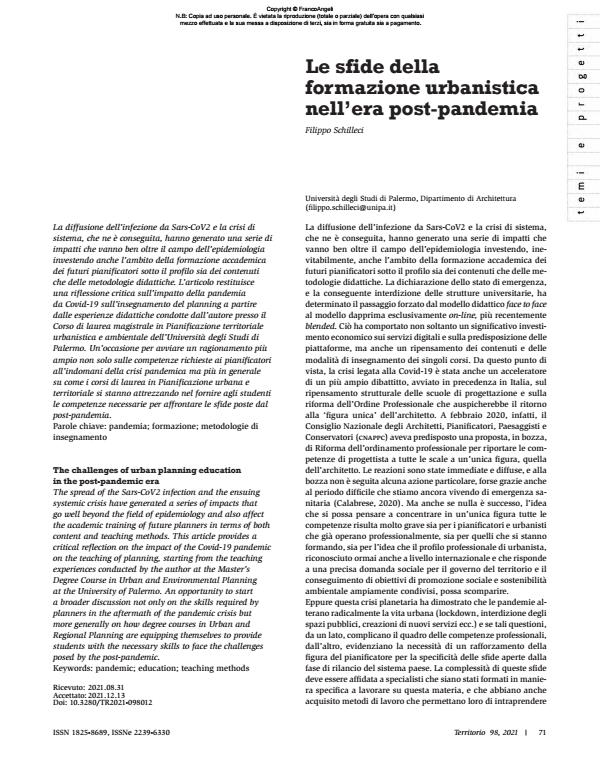The challenges of urban planning education in the post-pandemic era
Journal title TERRITORIO
Author/s Filippo Schilleci
Publishing Year 2022 Issue 2021/98
Language Italian Pages 4 P. 71-74 File size 113 KB
DOI 10.3280/TR2021-098012
DOI is like a bar code for intellectual property: to have more infomation
click here
Below, you can see the article first page
If you want to buy this article in PDF format, you can do it, following the instructions to buy download credits

FrancoAngeli is member of Publishers International Linking Association, Inc (PILA), a not-for-profit association which run the CrossRef service enabling links to and from online scholarly content.
The spread of the Sars-CoV2 infection and the ensuing systemic crisis have generated a series of impacts that go well beyond the field of epidemiology and also affect the academic training of future planners in terms of both content and teaching methods. This article provides a critical reflection on the impact of the Covid-19 pandemic on the teaching of planning, starting from the teaching experiences conducted by the author at the Master’s Degree Course in Urban and Environmental Planning at the University of Palermo. An opportunity to start a broader discussion not only on the skills required by planners in the aftermath of the pandemic crisis but more generally on how degree courses in Urban and Regional Planning are equipping themselves to provide students with the necessary skills to face the challenges posed by the post-pandemic.
Keywords: pandemic; education; teaching methods
Filippo Schilleci, Le sfide della formazione urbanistica nell’era post-pandemia in "TERRITORIO" 98/2021, pp 71-74, DOI: 10.3280/TR2021-098012